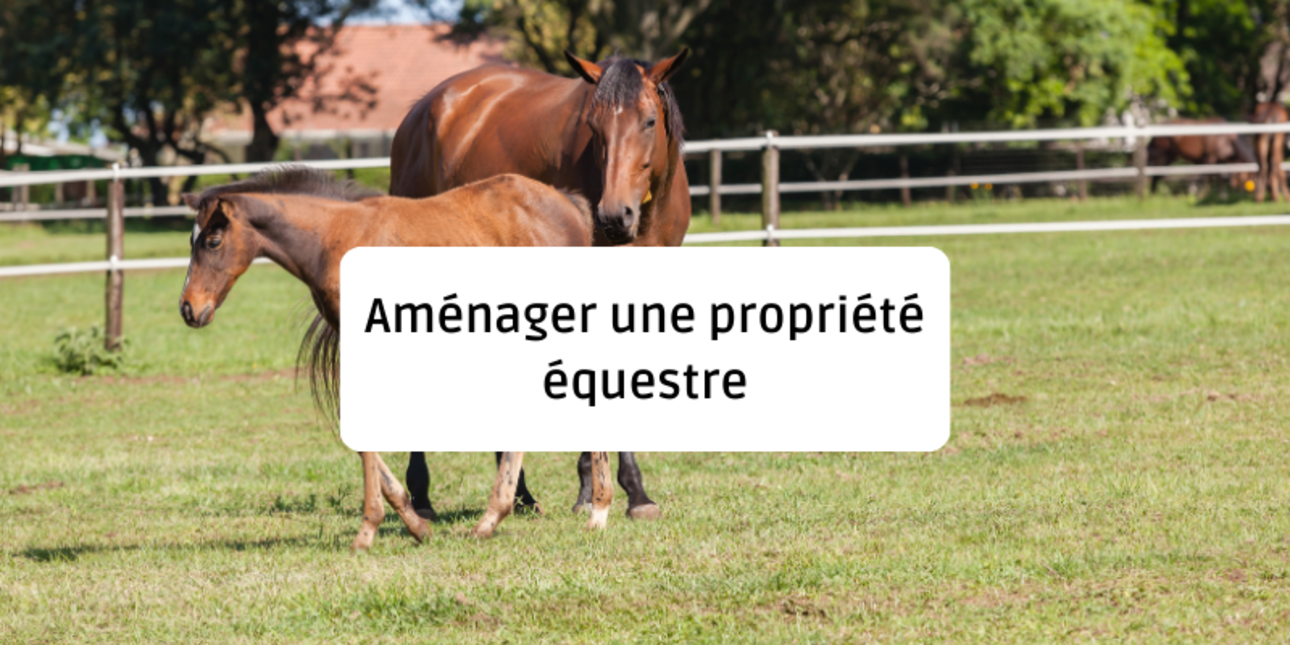
Buying an equestrian property is an exciting step for any horse lover. However, the development that follows this acquisition is just as crucial and requires careful planning. Whether you've just acquired your own equestrian estate or are looking to optimize an existing property, this article will guide you through the essential steps for creating a functional, safe and enjoyable space. From the design of the stables to the layout of outdoor spaces, including work and training areas, discover how to transform your property into a true haven for your equines and optimize your investment.
The choice of land is essential for an equestrian property. Stable, well-drained soil is essential to avoid problems of dampness and mud. Topography also plays an important role: a slightly sloping site will facilitate water run-off, while a flat site will be ideal for paddocks and training areas. The total surface area of the site must be large enough to accommodate all the necessary infrastructure and provide sufficient space for the animals to exercise.
Water supply is crucial for a stable. Make sure you have sufficient access to drinking water for the horses and the stable's daily needs. Installing a rainwater harvesting system can be an ecological and economical solution for watering quarries or cleaning facilities. Good water management is essential to maintain optimum hygiene in the stable.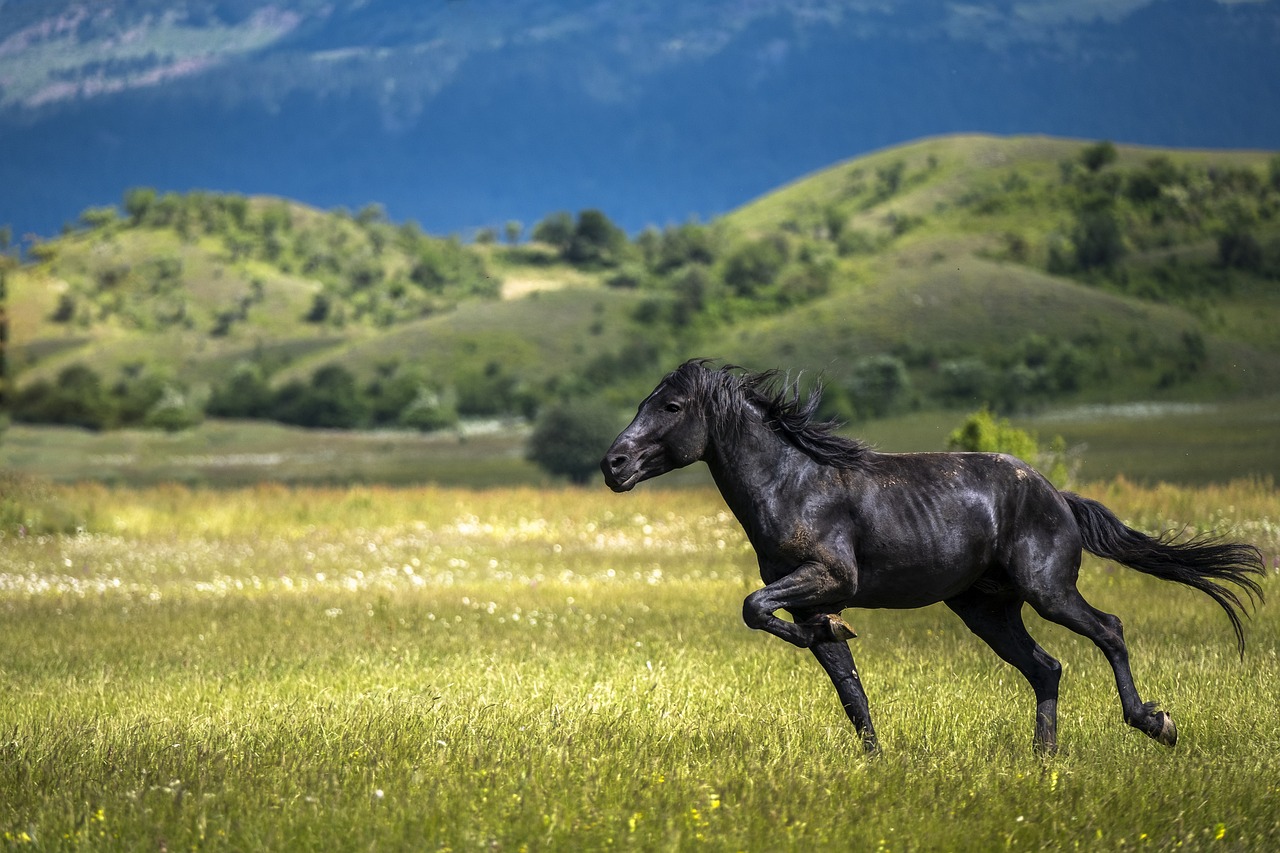
Good lighting is essential for everyone's safety and comfort. Make sure your electrical installations are up to standard and sufficiently powerful to supply the stable, paddocks and work areas. The use of LEDs can reduce energy consumption while ensuring optimal lighting, which is of great benefit to sustainable site management.
For stable construction, opt for durable, easy-to-maintain materials. Treated wood is often preferred for its aesthetic appeal and insulating properties, but concrete or steel can be interesting alternatives for their robustness. Make sure the structure is well ventilated to maintain good air quality and regulate temperature, essential criteria for the health of your horses.
Stalls should be spacious, with a minimum area of 9 to 12 m² for an average-sized horse. Ceiling height must be sufficient to allow the horse to raise its head comfortably. Each stall must be equipped with an automatic drinking trough, a feed trough and a hay rack. The stall door must be solid and secure, while still allowing the horse to see his fellow horses to meet his social needs.
Provide wide aisles (minimum 3 meters) to facilitate the passage of horses and equipment. The floor should be non-slip and easy to clean. A slight slope towards the center or sides will facilitate water drainage during cleaning. These areas must be designed to allow smooth, safe movement of animals and personnel.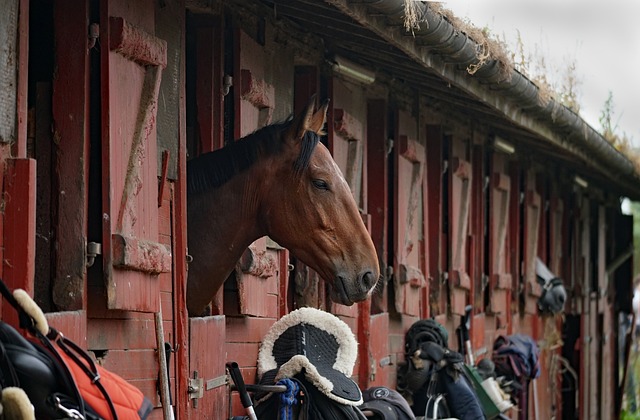
The riding arena is a central element of any equestrian property. Its size will depend on your needs, but a surface area of 20x40 meters is generally considered a minimum for dressage. The choice of ground is crucial: it must be soft, draining and non-slip. A mixture of sand, fibers and wood shavings is often used for its shock-absorbing qualities. The arena is the ideal place for a variety of exercises and obstacles.
If your budget allows, a covered riding arena is a valuable investment for working in all weathers. The structure must be well lit and ventilated. A minimum height of 4.5 meters under truss is recommended for jumping disciplines. The arena provides a protected space for training and caring for horses, whatever the weather.
A round pen with a diameter of 15 to 20 meters is ideal for lunging and breaking in young horses. The ground should be similar to that of the arena, to ensure consistency in the horses' work. It's an ideal place for exercising and observing equine behavior.
Paddocks must offer enough space for horses to move around freely. Allow around 1 hectare for 2 to 3 horses. Fencing must be solid, visible and secure. Electric fences are often used for their efficiency and flexibility. These outdoor spaces are essential for the well-being of the animals and enable them to maintain regular physical activity.
Create stabilized paths to facilitate access to different areas of the property. These paths must be wide enough to allow the passage of maintenance vehicles and vans. Good drainage is essential to prevent mud from forming in wet periods and to keep the site clean.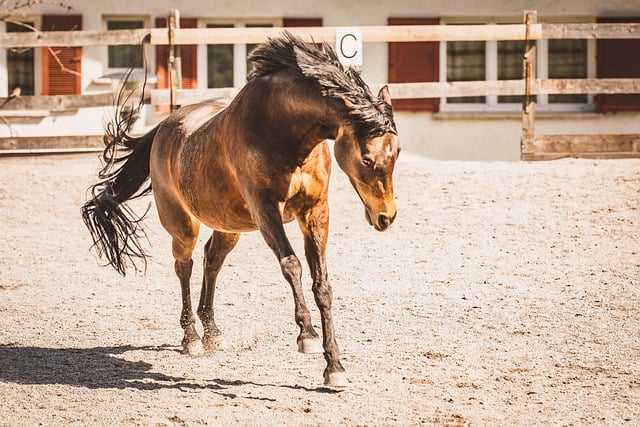
Plan an area dedicated to manure and dung storage, ideally on a concrete slab with juice collection. This area must be easily accessible for cleaning the stalls and removing the manure. Consider the possibility of using this manure to improve pastures or for composting, which can be an interesting part of the ecological management of your property.
A well-organized tack room is essential for storing technical equipment. Provide saddle racks, hooks for bridles and shelves for small equipment. A separate storage area for feed and bedding will keep the tack room clean and tidy. It's also an opportunity to have space to store equipment specific to each equestrian discipline.
Provide a shower area with a non-slip floor and good drainage. The grooming area should be spacious, well-lit and equipped with sturdy tie-down bars. A roof over these areas will provide appreciable comfort in all seasons. These areas are crucial for the daily care and maintenance of the horses.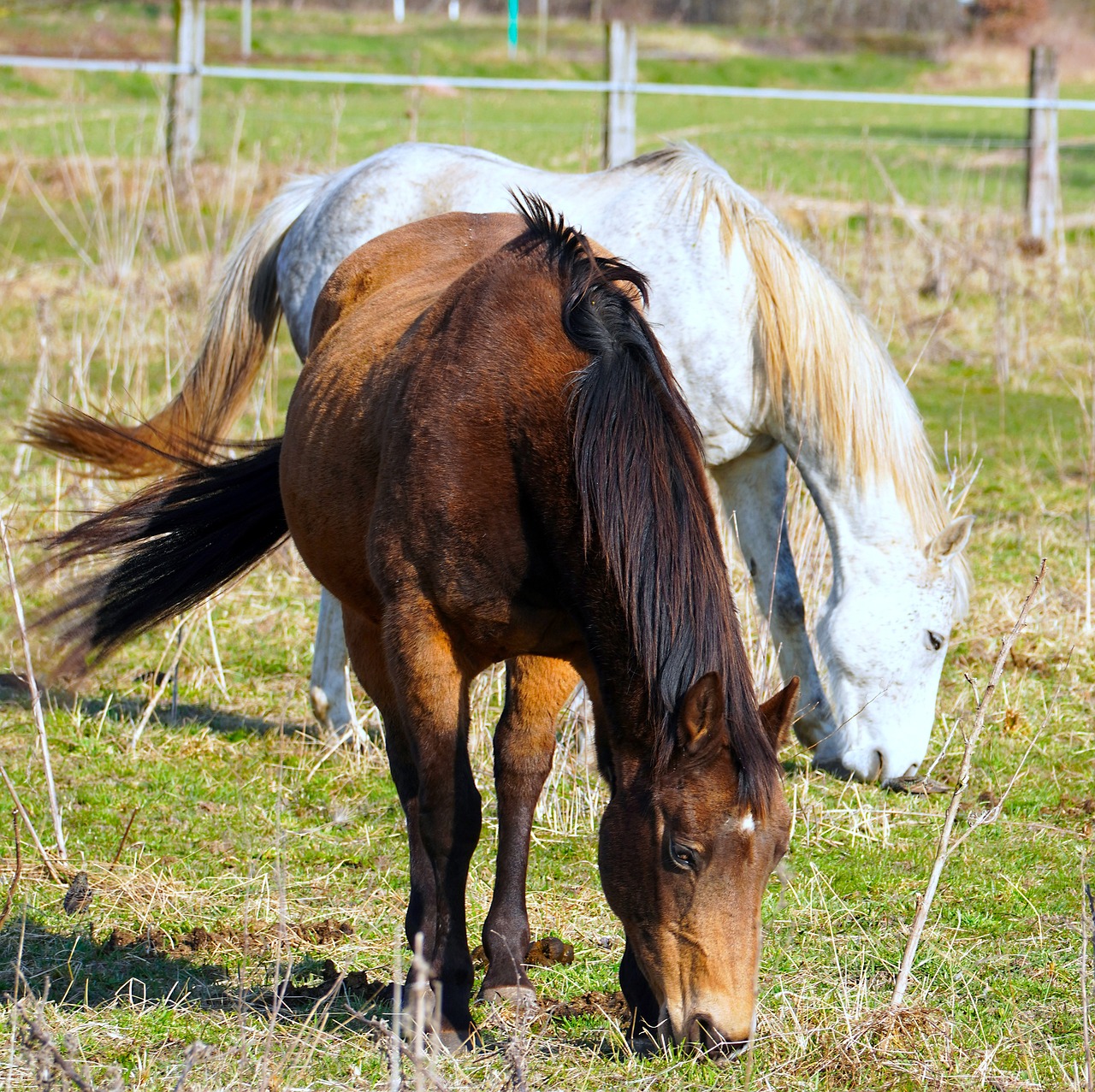
If you're planning to welcome outside riders, think about providing a friendly reception area and changing rooms with sanitary facilities. These facilities will contribute to the comfort of your customers and the professional image of your business. They can also serve as a meeting place for members of your equestrian group.
Before starting any development work, make sure you obtain all the necessary permits from your local town hall and the relevant authorities. Planning regulations may vary from region to region, particularly as regards the construction of farm buildings and the housing of animals.
Incorporate environmentally-friendly practices into your project. Planting trees and hedges can provide shade for horses and contribute to biodiversity. Consider installing solar panels to reduce your energy consumption. Ecological management of your equestrian property can be a major asset to its image and sustainability.
The development of an equestrian property is a complex project requiring in-depth consideration of many aspects. By taking into account the needs of the horses, the functionality of the facilities and regulatory constraints, you can create a harmonious, high-performance equestrian space. Don't forget that flexibility is important in your planning.
Your equestrian property will probably evolve over time, according to your needs and means. A well thought-out design from the outset will enable you to adapt your facilities more easily in the future.
Finally, don't hesitate to consult professionals (specialized architects, veterinarians, equestrian development experts) to guide you in your choices. Their expertise can prove invaluable in optimizing your project and avoiding costly mistakes.
By following these tips and tricks, you'll be well equipped to create an equestrian property that's functional, comfortable and suited to your ambitions, whether personal or professional. Your passion for horses deserves a setting to match, and a well thought-out layout will be the key to your success and the well-being of your equines. In the end, you'll have a complete equestrian site, ready to host a dynamic and fulfilling equestrian activity for all.